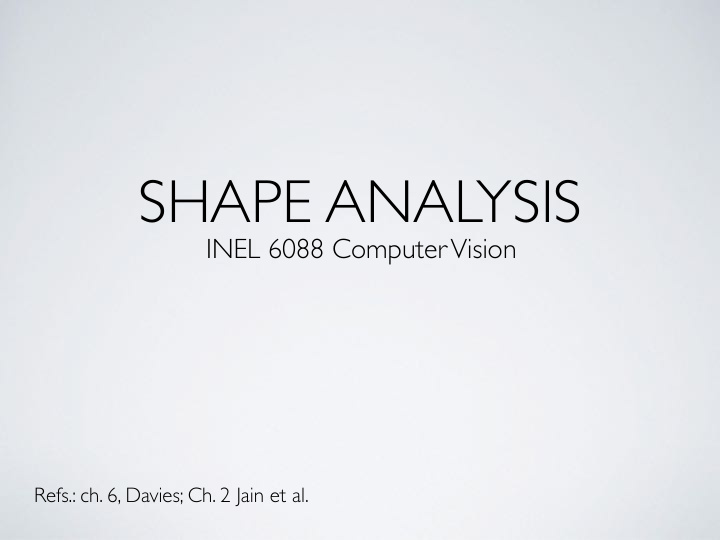



SHAPE ANALYSIS INEL 6088 Computer Vision Refs.: ch. 6, Davies; Ch. 2 Jain et al.
TOPICS • Connected components • CC Labeling • Image moments • Geometrical properties: position and orientation • Region-boundary following Algorithm • Distance-metrics and skeleton • Morphological operations
Distance metrics q ( x i − x j ) 2 + ( y i − y j ) 2 d E = q − − d 4 = | x i − x j | + | y i − y j | = ( ) | | | | − − d 8 = max ( | x i − x j | , | y i − y j | )
DISK OF RADIOUS 3 Euclidean City-block Chessboard
Distance transform: provides the minimum distance from a pixel of an object to the background. To compute, use where m is the iteration number for all pixels [u,v] such that d([u,v],[i,j])=1. Use 4-neighbors.
skeleton, = medial axis = SKELETON set of pixels that are at a locally- maximum distance from the background A pixel [i,j] is locally maximum if its distance to S is not less than that of all its neighboring pixels [u,v]. Here we are using 4- neighbors.
skeleton, = medial axis = set of pixels that are at a locally- maximum distance Skeleton from the background S* A pixel [i,j] is locally maximum if its distance to S is not less than that of all its neighboring pixels [u,v]. Here we are using 4- neighbors.
THINNING
THINNING • For each pixel in the CC, examine its 3x3 pixel- neighborhood • Remove pixels that are in the boundary until the region have been reduced to thin-lines • keep boundary pixels • that are needed to maintain 8-connectivity • that are at the end of a line
EXPANDING AND SHRINKING Expanding: Change pixel from 0 to 1 if any neighbors of the pixel are 1. Shrinking: Change a pixel from 1 to 0 if any neighbors of a pixel are 0. Expanding followed by shrinking can be used to fill holes. Shrinking followed by expanding can remove isolated noise pixels.
Recommend
More recommend